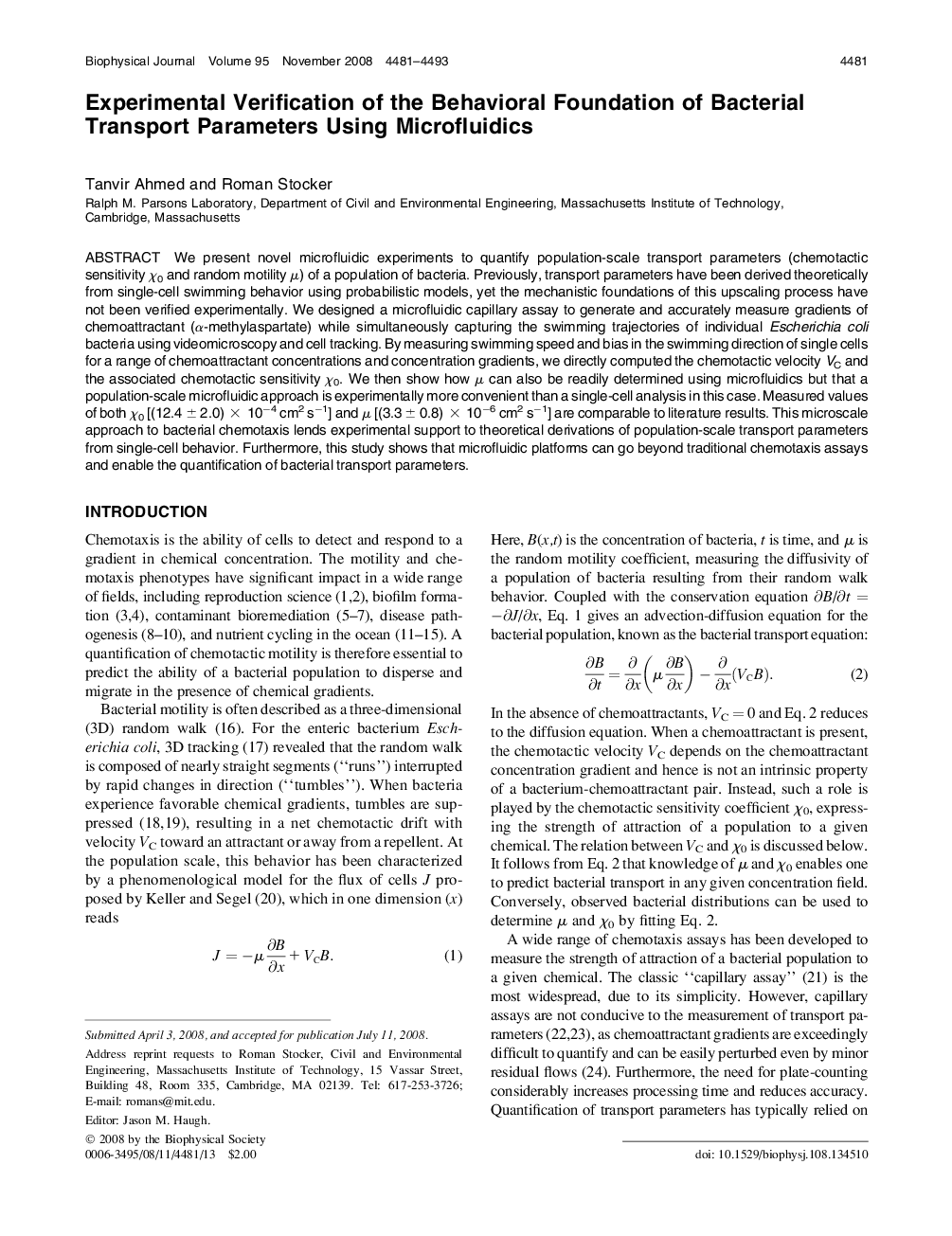| کد مقاله | کد نشریه | سال انتشار | مقاله انگلیسی | نسخه تمام متن |
|---|---|---|---|---|
| 1956499 | 1057858 | 2008 | 13 صفحه PDF | دانلود رایگان |

We present novel microfluidic experiments to quantify population-scale transport parameters (chemotactic sensitivity χ0 and random motility μ) of a population of bacteria. Previously, transport parameters have been derived theoretically from single-cell swimming behavior using probabilistic models, yet the mechanistic foundations of this upscaling process have not been verified experimentally. We designed a microfluidic capillary assay to generate and accurately measure gradients of chemoattractant (α-methylaspartate) while simultaneously capturing the swimming trajectories of individual Escherichia coli bacteria using videomicroscopy and cell tracking. By measuring swimming speed and bias in the swimming direction of single cells for a range of chemoattractant concentrations and concentration gradients, we directly computed the chemotactic velocity VC and the associated chemotactic sensitivity χ0. We then show how μ can also be readily determined using microfluidics but that a population-scale microfluidic approach is experimentally more convenient than a single-cell analysis in this case. Measured values of both χ0 [(12.4 ± 2.0) × 10−4 cm2 s−1] and μ [(3.3 ± 0.8) × 10−6 cm2 s−1] are comparable to literature results. This microscale approach to bacterial chemotaxis lends experimental support to theoretical derivations of population-scale transport parameters from single-cell behavior. Furthermore, this study shows that microfluidic platforms can go beyond traditional chemotaxis assays and enable the quantification of bacterial transport parameters.
Journal: - Volume 95, Issue 9, 1 November 2008, Pages 4481–4493